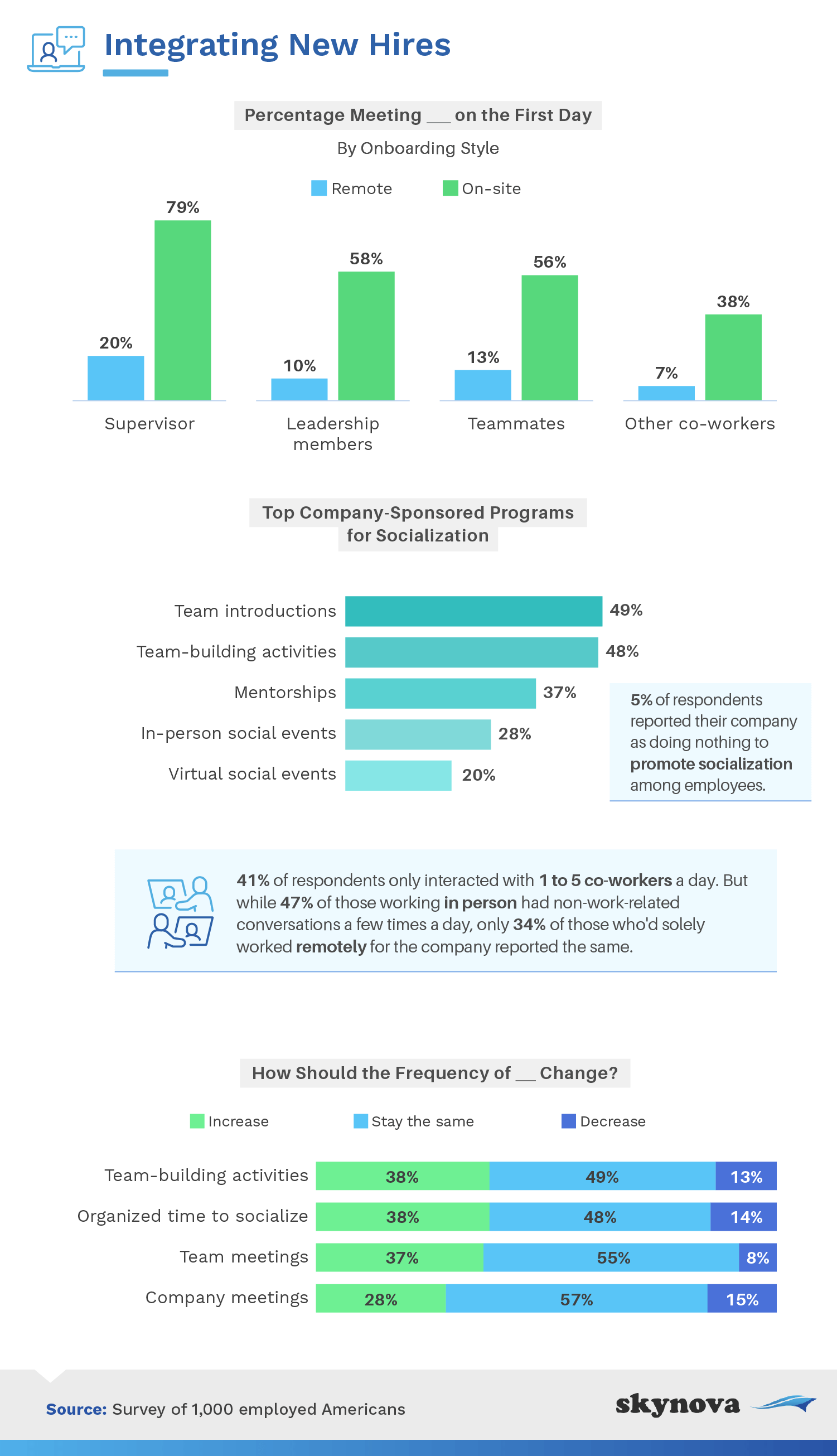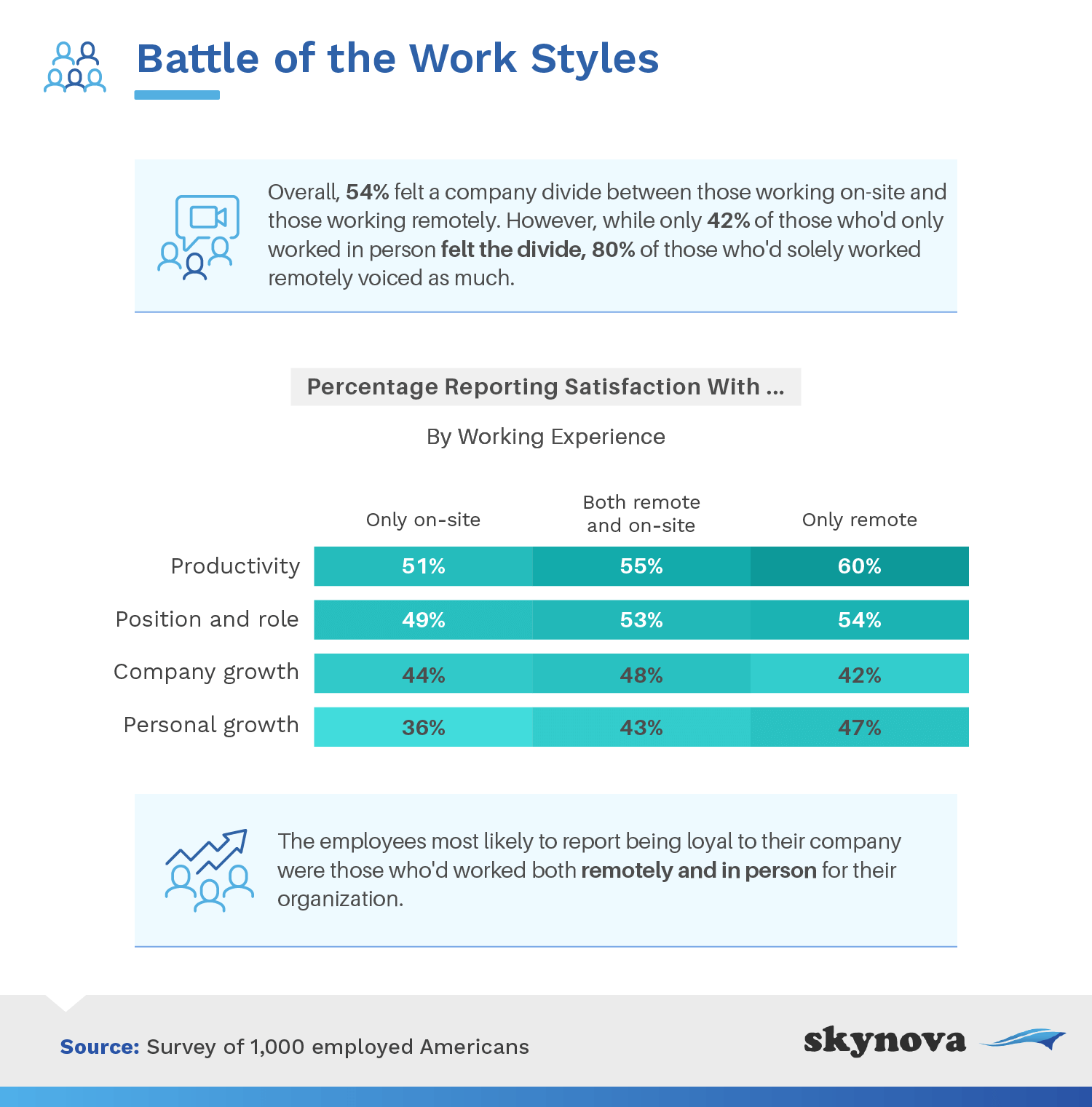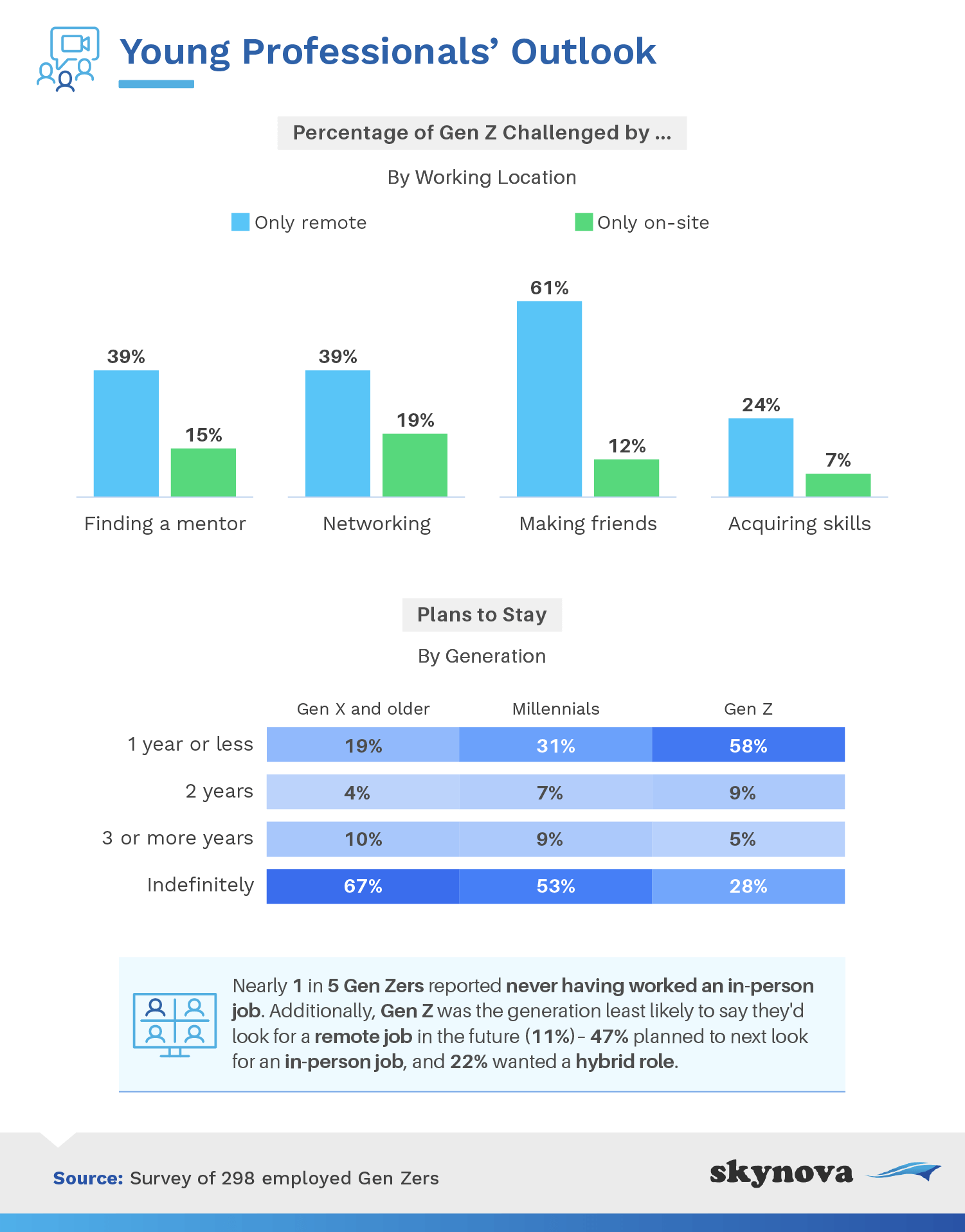
|
With the COVID-19 pandemic, remote work has become even more common, and it looks like this trend is here to stay. During the past 18 months, many hires were completed remotely as restrictions prevented offices from functioning as usual.
While some workers have already or will eventually work in the company office, those who have never done so might feel different from employees returning on-site.
Moreover, while some employees are perfectly happy working from home, others miss their office and the perks that go with it. For new hires, interactions with co-workers might be vital for understanding the company’s culture, getting to know their team members, or integrating into a new position. We’ve asked 1,000 workers how they feel about their work style, their company, and how well integrated they feel in their current job.
Being hired and welcomed to a new company remotely can vary greatly from typical in-person integration programs. We looked at the components of onboarding programs for new hires and how companies use them to integrate their new employees, depending on the style of training.

The most successful components varied depending on the onboarding method. Workers being integrated on-site found it helpful to shadow another worker. On the other hand, manuals were vitally important for those training remotely despite not even appearing in the top 5 for those trained in person.
Thirty-eight percent of workers who were integrated remotely in a self-guided manner felt that their training was sufficient, compared to 51% satisfied with training completed on-site. However, when the integration program was conducted remotely with live training, the satisfaction level was similar to the employees trained on-site.
While many of the training components listed above can be achieved remotely, getting a feel for co-workers and management can be difficult. For new hires, most respondents met with their supervisor, teammates, and other management personnel on-site during their first workday.

Employees who work completely remotely tended to have fewer non-work-related conversations than those working in person. This may be due not only to a decrease in unstructured conversations between employees but also because the number of general interaction with co-workers has also decreased.
Some companies promote team-building activities and socialization programs when onboarding new recruits. The majority of our respondents were satisfied with the frequency of such programs, while around a third would like these socializing and team-building events to be more frequent.
Some employees working remotely said they were happy with their situation; others could feel a gap between the remote and on-site workers at the same company. Almost half of the workers felt there was a divide depending on the work style, but this gap was felt more by those working remotely: 76% of fully remote workers saw a difference, compared to 35% of those working in person.

Depending on their work style, respondents had different levels of satisfaction with their company. While employees working remotely are more satisfied with their productivity, personal growth, and position than those working in person, it seems that those working both on-site and remotely are the most satisfied with all aspects of their work. Therefore with a higher level of satisfaction, employees that had worked both on-site and remotely for their companies were the most loyal.
While some workers had to adapt to the pandemic work restrictions and change their work style, for many Gen Z employees, this is the only work landscape they know. One out of 5 workers from Gen Z reported as only having worked remotely in their current position.

Making friends, networking, and finding a mentor were the biggest challenges reported by these younger remote employees. Making friends was the most difficult aspect, with 61% of the Gen Z remote workers having problems creating co-worker friendships. The social aspect of on-site work is clearly making a difference on these issues, as only 12% of those working on-site reported having an issue making friends.
Maybe due to these difficulties, over half of the Gen Z respondents did not plan to stay in their current role for more than another year. Furthermore, almost half of them said they would look for an on-site job for their next position, while 22% would prefer a hybrid work environment. For these Gen Z workers, entirely remote positions did not seem to be preferred. While older workers with families or other household obligations might enjoy the flexibility that comes with remote work, it seems that the younger workers find it more difficult, especially when it comes to the social elements of the workplace.
The pandemic has clearly shifted work habits for some companies and their employees and, in turn, has increased the need for remote onboarding. However, joining a new company remotely is not always easy for new employees, who might lack a sense of teamwork and belonging in the company. For those remote hires, it might also be more difficult to create social bonds with their co-workers.
Some recent research and some of the responses from this survey reveal that a hybrid model might be what works best for most employees, giving them some flexibility in their schedule and allowing in-person meetings, social time with their co-workers, and opportunities to network.
Whether you are onboarding new employees remotely, in person, or a mix of both, Skynova's online invoice templates can help your small business operate more efficiently. Additionally, we enjoy writing about exciting topics. They usually have a business or workplace angle (such as hiring, onboarding, and socializing in the workplace). When researching these articles, we use both primary and secondary sources to provide the best analysis we can.
We surveyed 1,000 employed Americans; this included 68 baby boomers, 131 Gen Xers, 503 millennials, and 298 Gen Zers. Additionally, 55% of our respondents were women, 44% were men, and 1% were nonbinary. For breakdowns looking at the ways people had worked for their company, 399 had only worked in person, 271 had only worked remotely, and 330 had worked both in person and remotely.
The data collected was self-reported, which is sometimes associated with issues such as telescoping, exaggerating, and selective memory. This is a purely exploratory study, and none of our hypotheses were statistically tested.
If you think your friends or family might be interested in our study on remote workers, feel free to use any of the information here for noncommercial purposes; however, please link back to this page whenever you share it.